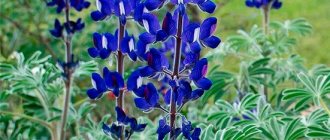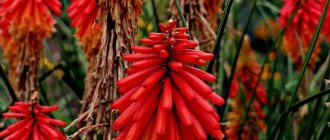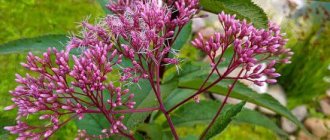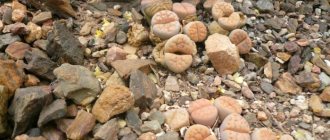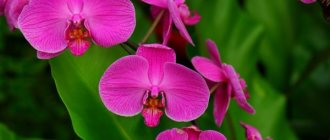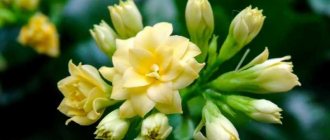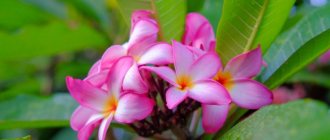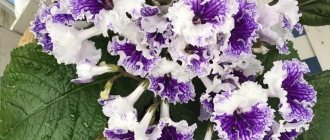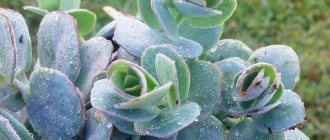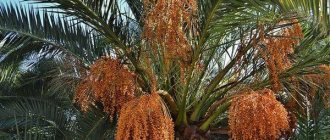Nowadays, much more people are trying to decorate the interior of their personal home with some kind of plants. When decorating, many people want to spend less time on it, getting a significant result in return.
Plants that combine both beauty and unpretentiousness are succulents. Succulents can survive without care for a long time, and their wide variety will allow you to choose the option that best suits your interior.
An excellent representative of succulents is Spanish Sedum . The associated name for this plant species is sedum.
What it is?
Creeping (ground cover) sedums or sedums are one of the groups of sedums (perennial low succulents), characterized by the ability to easily take root and grow quickly, covering huge surfaces of the soil with a dense and green “carpet”.
Creeping sedums are sometimes called lodging sedums - all thanks to the spreading stems. The height of the plants ranges from 15 to 30 cm. The scientific name (from the Latin sedare - “to pacify” or “to sit”) accurately reveals the properties of the plant: the leaves of sedum act as a painkiller for wounds and it takes root well in the soil.
Reference. The Russian name “sedum” is borrowed from the Ukrainian “cleaning” and is associated with the use of the plant in cleansing the intestines.
People also call it “squeaky grass”, “hare grass or fever grass”. The plant is very widespread: it grows in Eurasia, Africa, North and South America. In Russia, under natural conditions, they grow in the Caucasus.
detailed information
Other names
Application
Sedum can be used in landscape design when decorating flower arrangements, alpine slides, and rockeries. Looks great both in single and group plantings with low herbaceous plants and sedums of different varieties.
Spanish sedum is an excellent ground cover. The stems are covered with small narrow light green-pink leaves. The flowers are bright yellow.
Features of growth
Spanish sedum (Family Tolstyankov) is a perennial evergreen ground cover 5–10 centimeters high. The stems are dense, abundantly covered with short narrow leaves of light green-pink color. In May, small white flowers bloom at the ends of the stems.
Habitats
Sedum can grow in Russia, East Asia, Europe, and South America.
Climatic conditions
Tolerates low temperatures well and is resistant to drought.
The soil
It takes root in any conditions and on any soil. Please note: sedum does not tolerate waterlogging well.
Landing
The best time to plant a plant is mid-spring, when the ground is warm enough.
It is better to give preference to sunny or semi-shaded places.
An unpretentious plant that can grow without care. The exception is watering during dry periods and weeding. It is necessary to water only during very severe drought, because... Overmoistening is more dangerous for sedum than lack of moisture.
Trimming
At the beginning of spring, sanitary pruning is carried out.
Diseases/pests
Sedum is rarely affected by diseases, but can suffer from fungus if there is excess moisture. Dangerous pests include thrips, aphids, and weevils.
The stems are dense and green.
Leaves
The leaf blades are smooth, neat, dense, small and narrow, as if they cling to the stems. Color green-pink
Description of species and photos
Acrid (Acre)
The name indicates the poisonous nature of the plant. The leaves are thick, the rhizomes are thin, the corolla consists of golden-yellow petals. Honey plant. An ornamental plant, in Russia it grows in the Ciscaucasia and Western Siberia.
White sedum (Sedum album)
One of the most aggressive species, it easily fills any free spaces, the shape of the foliage is similar to a cylinder. The white flowers are shaped like stars.
Important! Over time, the green leaves will turn pinkish, purple or reddish.
The flowers have a pleasant smell, so they are an excellent honey plant. The stems of the plant are bare, creeping, and form dense mats.
Spanish (Hispanicum)
A small herbaceous plant that forms a dense carpet of leaves and stems. When exposed to sunlight, the leaves may take on a reddish tint. Grows well in the shade and is not fussy about soil composition.
Kamchatsky (Kamtschaticum)
Medium-sized species, bush height - 30-40 cm. The leaves are large, jagged at the ends. The flowers are collected in corymbose inflorescences.
Attention! The flowers are yellow-orange and bloom in early summer.
Sieboldii (Sieboldii)
It is an indoor variety of sedum. This is an ampelous plant, the stem length is 20-25 cm. Its leaves are bluish-green, round in shape. The plant is heat-loving and does not tolerate temperatures below 10, so in the cold season it is better to bring it indoors. Suitable for decorating alpine slides and rockeries, outdoor hanging flowerpots.
Rubens Lizard
The plant is highly decorative, the flowers are star-shaped, up to 2 cm in diameter, collected in corymbose inflorescences. The leaves are greenish-pinkish. It is grown as a houseplant in pots, as well as in rockeries, rocky compositions, alpine hills, multi-tiered flower beds and flower beds. Thanks to creeping rhizomes, it forms a dense carpet of rooted, highly branched shoots up to 20 cm in height.
Reference. It is a rare species, listed in the Red Book of Crimea, protected in the territory of nature reserves and state reserves (“Castel” and “New World”).
Eversii
This is a low-growing shrub, the color of the flowers is crimson, purple or pink. The plant is unpretentious and tolerates:
- heat without direct sunlight;
- moderate cold and drought.
Watering frequency: 1 time per week. It is grown both in flower beds and in hanging flowerpots.
San Sparkler Blue Pearl
Height 15-25 cm, forms a dense carpet, leaves are oval, bright purple, shoots are smoky in color. The inflorescences are pink and appear in late summer.
Important! The plant does not require careful care; it grows actively in sunlight; it needs to be watered rarely, in case of severe drying out.
Lydian (lydium)
A small species of sedum, it grows in small (up to 5-8 cm in height) caps. The stem is covered with small leaves, rounded at the tips. Large plants can “crush” this dwarf sedum. Used to enrich small decorative compositions. The leaf color turns red in early spring and fall.
Flowering - in June, not abundant, flowers - white, small. It is undemanding to soil composition, but grows well in partial shade with average moisture.
False (Spurium)
Height is about 10 cm, forms a dense carpet. The leaves are thin, spade-shaped, located opposite each other.
Attention! Widely used in Scandinavian countries for greening roofs.
Six-row (Sexangulare)
The height of the sedum is 5-15 cm. The length of the leaves is about 4-7 mm, they are usually located in 6 spiral rows, the color is bright green. The size of the flowers is 0.5-0.9 cm. The petals are bright yellow. It grows very quickly. Prefers sandy, rocky, dry soil. The plant is frost-resistant, light-loving, shade-tolerant.
Reflexum
The second name is rocky sedum (“Sedum reflexum”), translated as sessile, soothing. The root is creeping and grows strongly. Flowering begins in mid-July and lasts until the end of August. The flowers are yellow, have 5–7 petals, up to 1.5 cm in size.
Reference. Due to its small size and low growth, it is planted in flower beds and flower beds in the garden, but also in pots on window sills, open loggias and terraces.
Hybrid (Hybridum)
The height of the plant is 10-15 cm. The leaves are green, the flowers are yellow. The inflorescence is umbrella-shaped, consisting of several curls. It takes root well in the soil, forming a dense carpet. The plant tolerates drought and cold well.
Oregano (Oreganum)
The shoots are covered with bare, thick, rounded leaves. The color of the leaves and stems in the sun takes on a cherry-red hue. The flowers are yellow, small, collected in medium inflorescences on short peduncles. Oregon sedum requires good care: sunlight and water should be in abundance. Overwinters with leaves.
Important! In central Russia it survives under snow in winter, but in snowless winters in frosts below -25 C it needs shelter. Grows well in rock and container gardens. Feels great in small flower beds.
Leafy Dasyphyllum
The color is bluish or light green. The height of the mat is 2–10 cm. The shape of the leaves is oblong. The inflorescences are paniculate from several branches bearing umbrellas with curls at the ends. Flowers are 8 mm long, on short stalks. Outwardly similar to white sedum, it is smaller in size. Prefers sunny places. It reproduces by self-sowing and does not overwinter well. Planted in miniature rock gardens.
Rural (Selskianum)
The color of sedum is grayish-green. The rhizomes are strong and short. The stems are woody at the base, 20-40 cm high. The inflorescence is umbrella-shaped, consisting of several curls.
Attention! The flowers are small. The petals are yellow in color and are about 5 mm long. Blooms in July-August.
Variety "Sultan"
It blooms brightly and abundantly with golden flowers throughout the summer, and is unpretentious. It grows best in sunny places, along paths, alpine slides, and balconies. Not picky about watering, sandy soil is suitable.
Thick-branched (thick-leaved)
Sedum pachyclados forms round, spherical pads, 2-5 cm tall. Sedum bushes consist of many short stems, the shape of the leaves is flat, they form rosettes in several layers - bluish rosettes, up to 3 cm in diameter.
Reference. The plant grows slowly and is propagated by cuttings. Recommended for planting in rock gardens and container gardens.
Nussbaumerianum
Dwarf sedum up to 20 cm high with highly branched, large stems. The color of the leaves is bright green, but can also be brownish, red and orange. The inflorescences are large, round umbels, consisting of pinkish or white flowers with a pleasant aroma.
Stahl/Stalya (Stahlii)
A plant with thin erect or creeping stems up to 30 cm high. Its leaves are long, thin, needle-shaped. The flowers are yellow.
Important! The flower is used to decorate summer flowerpots on balconies along with annual flowers.
Mix or bright palette
The mixture contains sedum seeds:
- Spanish;
- white;
- hexagonal;
- bent;
- Kamchatsky
These species are distinguished by their unpretentiousness and ability to grow quickly, forming beautiful dense bushes and maintaining their decorative appearance throughout the season. Plants look great in mixborders, carpet arrangements, on rocky areas and slopes, in garden flowerpots and flowerpots.
"Starfish" (Pulchellum Sea star)
Forms voluminous pillow inflorescences, decorating compositions with a floral carpet. Height is about 10 cm, width - 30 cm. Prefers poor soil with good drainage, can withstand drought.
Attention! The inflorescences are formed from May to August, their shape resembles small starfish, and the color is soft pink. Suitable for complementing rocky gardens and flower garden borders.
Weinbergii
It is a dwarf species, has rigid and wide stems, pointed and thick leaves form rosettes. The color of the leaves varies from gray to bluish-lilac. The inflorescences are branched, sparse, and consist of white or yellow flowers.
Multi-headed (Multiceps)
Another name for the dwarf Joshua tree is native to Algeria. The leaves are grayish-green and grow at the tips of the branches. The roots are small but grow quickly over large areas. The flowers are bright yellow, star-shaped, and appear in late summer.
Reference. It is cultivated as an ornamental plant, planted in containers or in the ground as a ground cover.
Morgana (Morganianum)
The leaves are light green and cone-shaped. In Russia it is able to grow only indoors:
- greenhouses;
- winter gardens;
- greenhouses;
- apartments and offices.
It tolerates moisture deficiency well due to its ability to accumulate moisture reserves. The plant is protected from sunburn by a wax-like coating.
Important! In addition to being decorative, the flower has energetic properties: it prevents potential quarrels and improves the mental state of household members.
The plant is unpretentious, growing is not difficult even for novice gardeners.
general information
- Motherland . Spanish sedum does not have a specific historical homeland. Its perennial crops were found in Western Europe, the Caucasus, Crimea, and sometimes in Asia Minor.
- Flowering time . Spanish sedum blooms around July. When it flowers, it dies instantly; sedum is not a perennial. After dying, Spanish sedum produces good self-seeding, leaving a significant family in its place.
Appearance . Spanish sedum is a low-growing plant, less than 10 cm. It grows into a “mat”, covering the ground with a dense layer. The color and shape of the leaves varies, but on average they are inconspicuous, papillary leaves, bluish-green or reddish in color. In nature, several types of sedum often grow nearby at the same time.
Care
Sedums are distinguished by their unpretentiousness and resistance to various climatic changes. With minimal care, these plants can grow actively and look great. After planting in the ground, shallow loosening and removal of weeds is necessary.
Certain types of sedum are capable of growing wildly and crowding out weeds. To remove dying leaves, shoots and peduncles that disrupt the decorative appearance of the sedum cover, it is necessary to trim it. Another advantage of pruning is rejuvenation: the plant takes on a pleasant and well-groomed appearance.
Growing from seeds
Sedums are grown from seeds and by cuttings.
- Parts of the shoots are separated from the main one and dried in a shady place for 2-3 hours.
- Then they are planted in the soil in a permanent place.
- If the weather is rainy, then sprinkle the cuttings with wood ash powder, this will protect them from rotting in wet soil.
Propagation by seeds produces an adult flowering plant in two years. Small seedlings with two leaves are immediately planted outside.
Attention! When planting, you need to take into account the ability of sedums to cross-pollinate, which results in the emergence of new hybrid forms and colors.
Video about growing sedums from seeds:
Propagation by seeds
You can plant sedum in seedlings or plant by direct sowing in open ground. A special feature of this option is the artificial stratification of already planted seeds. After distributing them over the surface of the substrate, the container is covered with film and placed in a place with very low positive temperatures (refrigerator, cellar). After 2 weeks, you can move the container to a cool place. Over the next 2 weeks, the seedlings will begin to sprout.
Autumn planting of seeds is acceptable, but not in open ground, but in containers that will winter under the snow. In April they will also need to be brought indoors. After the seedlings emerge and a pair of leaves forms, it is necessary to pick them.
The described generative method of reproduction makes sense only for species-specific specimens. Varietal plants will not transmit their characteristic characteristics to their seeds.
Transfer
Standard planting methods are not very suitable for sedums:
- To prevent rotting of the cuttings in the planting hole, the area is dug up, removing the roots of perennial weeds.
- For heavy soil, add sand. The introduction of ash is beneficial. The cuttings are spread thickly on the surface of the ground and lightly sprinkled with a mixture of light 2-3-year-old compost and sand.
- Water lightly without washing out the plantings. “Pillows” of ground cover sedums retain their decorative effect from 3 to 5 years.
Sedum seeds are small and sown superficially; varietal forms are best grown through seedlings. This can be done as early as late February – early March. And here you also need to use light sandy soil.
Possible maintenance difficulties
- Among the insects that harm sedum are aphids, sawfly larvae and weevils.
- When overwatered, the plants turn black and fall, affected by rot.
- Most ground-bloods grow well in direct sunlight, but there are exceptions; this must be taken into account when choosing a variety.
- There is also no need for frequent watering: plants accumulate moisture well and are able to do without water for a long time.
Sedum groundcover is part of the sedum genus. They are united by rapid growth and the ability to create plant carpets. The variety of species allows gardeners to decorate and diversify the landscape of a site without spending a lot of time and effort.
The use of sedum in garden decoration
Sedum is used in the garden to mask concrete and stone surfaces. They also decorate alpine slides. There are original ways to use sedums - they are grown on roofs, illuminated slopes, in hanging pots, and balcony boxes.
In flower beds, sedum is planted in small groups, combined with asters, cereal crops, and miniature coniferous plantings.
Medicinal properties
Sedum is used in folk medicine to treat the gastrointestinal tract and liver diseases. It also helps cope with coronary heart disease, pulmonary failure, and anemia. Culture provides a tonic effect on the body, treats fear and other mental illnesses.
